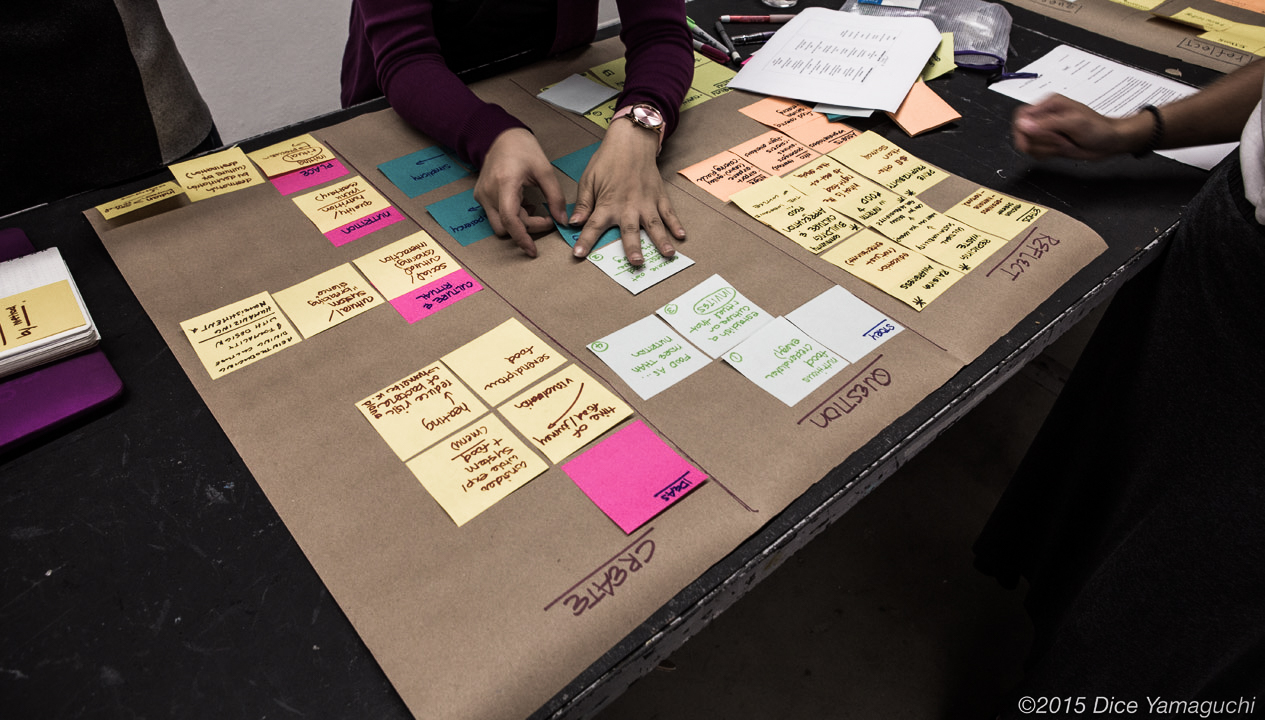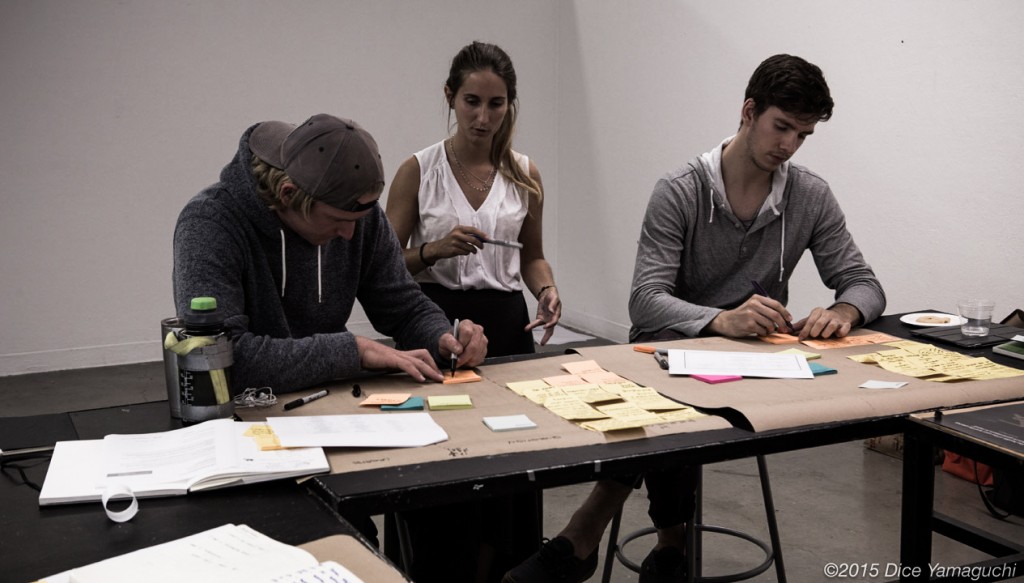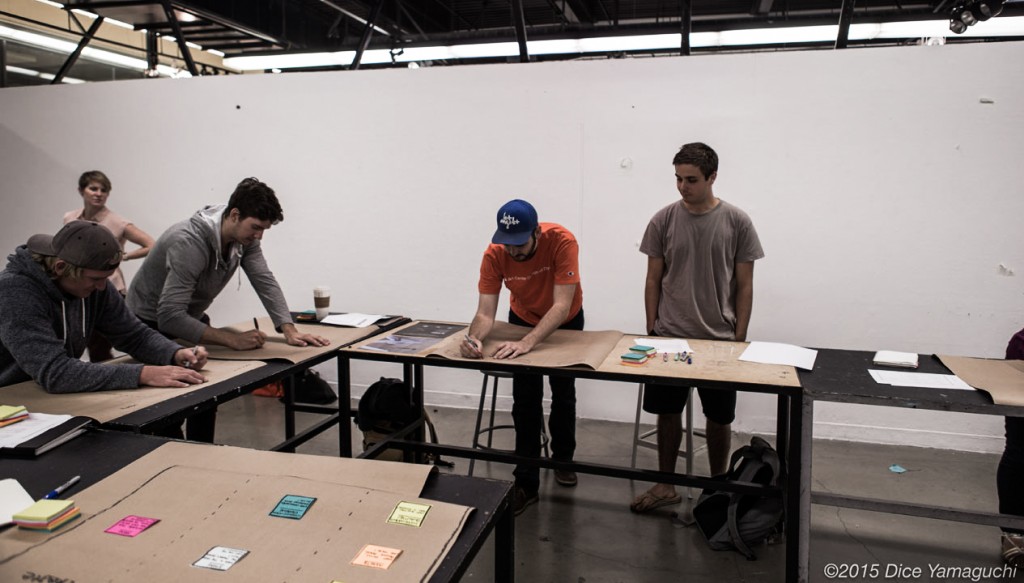Joana Casaca Lemos is a Communication Designer with a diverse background having worked independently and in collaborations with start-ups and social enterprises. Currently she is a mentor for Hyper Island and a full time PhD student at Central Saint Martins College of Art & Design in London. Her research questions the role of communication design in the emerging area of social innovation for sustainability. It explores an ‘expanded practice’ of designing for communication between people aiming to engage wider publics towards more sustainable ways of living.
On October 7, 2015, Joana visited ArtCenter to hold a workshop for students in the Design for Sustainability course taught, by Heidrun Mumper-Drumm and Dice Yamaguchi. In the Design for Sustainability Course, students work on developing products and systems while considering the environmental consequences of materials, production methods, performance, and life cycling. Joana explained her new designing for communication tool, and walked the students through the application of the tool to each of their sustainability projects, both to help the students further develop their projects and to help her further test the efficacy of her tool.
-Please explain your designing for communication tool and its purpose.
My research applies an iterative methodology to develop a practical communication design tool and a new framework specific to social innovation for sustainability. As a contribution to the discipline of communication design, the tool challenges the role of the designer in this area with the proposition of designing for communication. The tool aims to empower small-scale initiatives to communicate their story and further foster their sustainability qualities.
-At what stage in development was your tool when you used it with our students?
So far the tool had been extensively tested on non-designers in a series of workshops with small-scale sustainable food businesses and communities, seen as adequate examples of sustainability focused initiatives. I was curious to understand how designers themselves would engage with the tool, how it might be useful, and what it lacked. This particular class at ArtCenter focuses on sustainability in design and this was an appropriate ground given the diversity of student projects. As we were small group in the workshop we were able to work through the tool closely and have discussions along the way.
-Did our students surprise you in how they used or reacted to the tool? What insights did you gain from the session?
The multidisciplinary of ideas was fascinating and really challenged the potential of this tool to cover a broad scope of themes. I was curious to understand how a tool that been used by small-scale sustainable initiatives might be transferable to a college setting and to student projects. The first question in the tool asks to map the ‘ethos’ of the initiative/project. Surprisingly this was a central focus in the session that we spent quite some time discussing. Through a group discussion we explored each project’s ethos and purpose thoroughly and added suggestions to each-other’s workshop canvas. The workshop provided new insights on the role and use of the tool. The ‘communication strategies’ section seemed useful as a lens to the story the project is telling and students used these well when generating ideas. There was some uncertainty on the flow of the process itself, where to start / end, and students provided good critique for improvement.
-What did you think of the student’s projects?
I was very impressed by the multidisciplinary ideas and how some of the projects are quite personal to students. The ability to positively critique each-other’s work is important, particularly in an area where design knowledge is evolving, and in this sense it was encouraging to see this student community of design practice. I was also extremely thankful that students honestly critiqued the tool itself and what they found useful, considerations which I will take onto the next iteration.
-What is next for you?
How do you plan to move forward? The near future will be spent writing up and reflecting on the extensive practice over the last few months. There will be a next workshop early 2016 to test a new iteration of this tool. The re-design of the tool will also reflect the students feedback in this workshop at ArtCenter. I am looking forward to see the outcome of their final projects.
To learn more about Joana and her work please visit —> http://www.joanacasacalemos.com/
Connect with Joana here —> @joana_atelier



